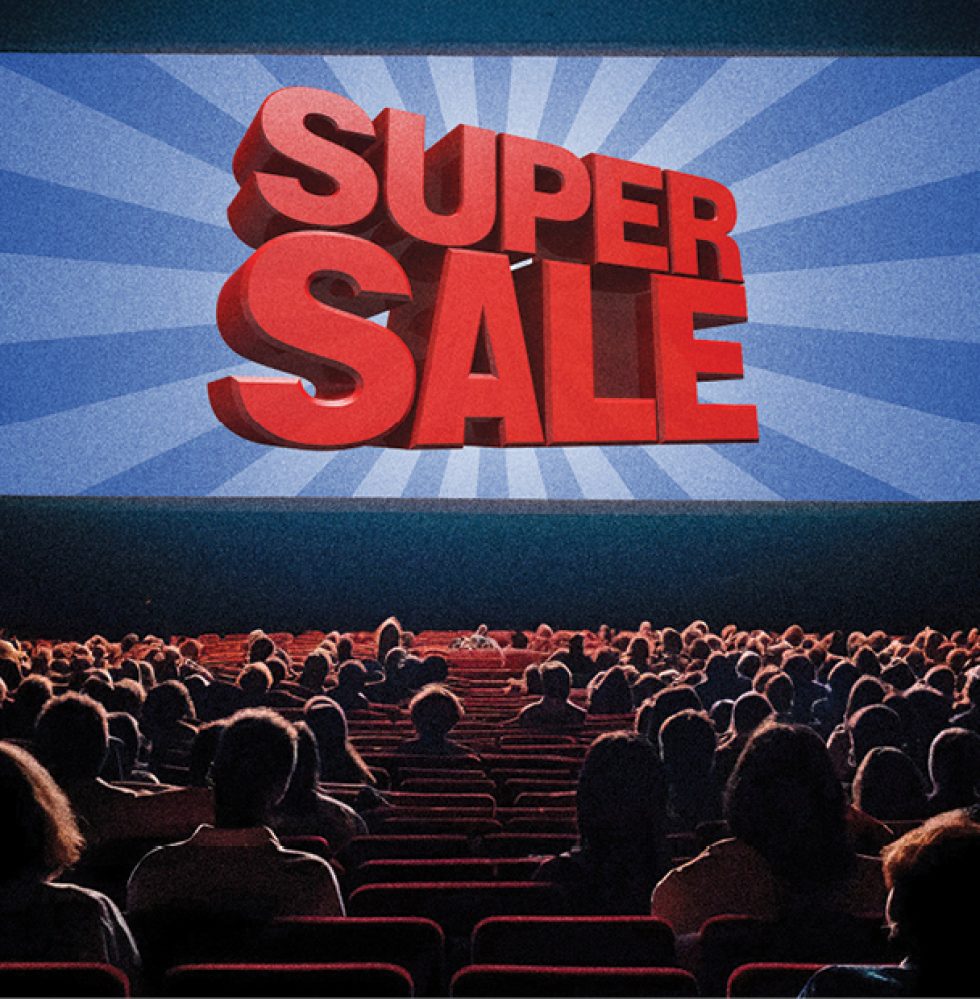
For decades, there has been no better way for Hollywood marketers to drum up interest in their films than to play trailers for thousands of fans settled in their seats at cinemas across the country waiting for the main attraction to begin. But this age-old tradition is being disrupted by an aggressive push to sprinkle in a sampling of commercials between trailers and the regular parade of supplemental spots promoting concessions and rules of the road (as in, no texting!).
Consumers — thanks to reserved seating — are realizing there’s no need to show up at the stated showtime if the actual movie may not begin until 20 minutes to 30 minutes later.
The erosion has been years in the making. In September of 2019, not long before COVID-19 struck, Cinemark Theatres and Regal Cinemas — the country’s two largest chains behind AMC Theatres — signed a landmark deal with ad company National CineMedia to show as much as five minutes of commercials after a movie’s official start time, and then air a 30-second to 60-second “Platinum Spot” before the one or last two trailers. Retail partners have included the likes of Jeep, E.L.F. Cosmetics, Google and Cook, among a number of other top brands.
At the time, NCM CEO Tom Lesinski said it was “the most significant strategic announcement since the company was founded in 2003.” Prior to that, NCM was relegated to playing commercials before the official showtime. He also suggested said market leader AMC active talks to join the initiative.
It fast turned into a boxing match. AMC issued a terse denial hours later, saying it flatly rejected the idea because of concerns that U.S. moviegoers would “react quite negatively to the concept.” Continuing, AMC, the country’s largest chain, said it had “no plan to introduce commercial advertising close to the start of a movie’s commencement at its theatres in the United States, nor does AMC envision entering into such an arrangement with NCM anytime in the foreseeable future.”
But times change and AMC, facing financial pressure, is reversing course. “Our competitors have fully participated for more than five years without any direct impact to their attendance,” AMC said in a statement to The Hollywood Reporter earlier this month.
The deal takes effect July 1, just in time for Universal’s Jurassic World Rebirth and DC Studios/Warner Bros.’ Superman. AMC is already known for its lengthy preshow time, which runs 25 to 30 minutes, so it will have to reconfigure its lineup — which includes the famous Nicole Kidman spot promoting the “magic” of moviegoing — to allow for the new ads without going over the half-hour mark. AMC declined comment, but other sources say it will begin addressing the preshow on its ticketing platforms next week and, fingers crossed, hope its audiences won’t mind the change too much.
AMC is already known for its lengthy preshow time, which runs between 25 and 30 minutes, similar to Regal and Cinemark in the new era. That means AMC will have to configure its lineup to allow for the NCM ads and “Platinum Spot.” ACM declined to comment for this story, but other sources say it will begin addressing the preshow on its ticketing platforms the week of June 23.
“Our competitors have fully participated for more than five years without any direct impact to their attendance,” AMC said in a previous statement to THR. The chain added, “The new deal between AMC and NCM allows both companies to drive new revenues to offset the impact of being hit by the shutdown of cinemas due to the COVID pandemic, followed by a at times faltering Hollywood industry recovery since the reopening of theaters and advertising being affected by macro-economic headwinds.”
According to EntTelligence, the firm founded by Steve Buck, only 60 percent of moviegoers this year were in their seats when trailers started playing. “Moviegoing behavior is shifting and continued experimentation with how to engage audiences is necessary,” he says.
The decline in attendance at the start of trailer play in New York and Los Angeles — the country’s two largest moviegoing markets — is particularly noticeable. And in recent screenings that have been observed by THR, attendees arrived after the stated showtime and as trailers were playing, a sign that consumers are recognizing what chains are doing. So far this year, only 42 percent of L.A. moviegoers were in their seats in time to see every trailer, compared to 55 percent last year. The New York stat is likewise 42 percent this year, compared to 47 percent last year.
Or, as one ticket buyer noted over the June 20-22 weekend when 28 Years Later started playing at prominent L.A. theater after a lengthy preshow, “finally.”
A version of this story appeared in the June 18 issue of The Hollywood Reporter magazine. Click here to subscribe.



